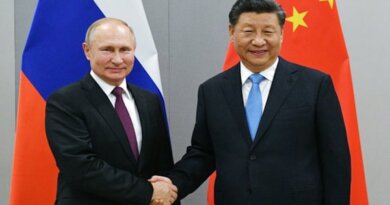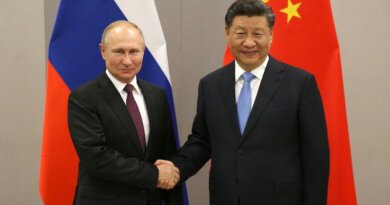RECENT BONHOMIE BETWEEN NORTH AND SOUTH KOREA MAY LAST BUT NOT BETWEEN INDIA AND CHINA
By N.S.Venkataraman
CHENNAI, April 30: The two meetings on Friday 27th April 2018; one between North Korean leader Kim Jong-un and South Korean President Moon Jae-in and the other meeting between Indian Prime Minister Narendra Modi and Chinese President Xi Jinping caught the world by surprise, leaving everyone wonder whether the bonhomie would really last.
A few months back, North Korean leader Kim Jong-un threatened USA that he would send missiles to attack US cities. President Trump retorted that the USA would not hesitate to wipe out North Korea from the world scene. Both these persons, known for using rhetoric and vituperative language, were so hostile to each other that many thought that yet another war in Asia might happen soon. South Korea and Japan were preparing themselves to face any surprise attack from North Korea and there was high tension in the region.
All of a sudden, North Korean leader set foot in South Korea, shook hands with his counterpart President Moon Jae-in and both the leaders pledged mutual cooperation and harmony and promised to pursue arms reduction, denuclearisation and ensure permanent peace.
This meeting was followed by a warm appreciation by President Trump, who said, “good things are happening but only time will tell”.
Will the bonhomie last between two Koreas?
While the above meeting between two Korean leaders caused surprise, it appears that this bonhomie would last, unless the USA and its allies would think that such unity between the two Koreas would be against their interests.
The fact is that South and North Korea are two regions artificially created after the Korean war, which was essentially fought by the USA and its allies to defeat the anti-US forces in Korea and prevent their dominance. The war was due to the divide and rule approach of the then US government, which the US, later on, attempted in Vietnam also. While thousands of Koreans died in the Korean war, the ground reality is that Koreans are one race. And it was the political division of North and South Korea and not cultural or emotional division.
Today, the economy of North Korea is in shambles with per capita income remaining abysmally low under the dictator, who has been surviving by annihilating the critics and opponents mercilessly. So far, North Korea managed its show in spite of near international isolation due to the direct and indirect support extended by China.
Now, with China developing huge global ambition and now reworking its strategies to advance its global trade and economic interests, it appears that China must have advised North Korea that such support would not anymore be possible, which must have made North Korean leader to seek peace with South Korea.
Once this artificial division between two Koreas would be given up or weakened, more contacts would be established between people living in South Korea and North Korea. Then, it would be impossible to prevent the emotional integration of the Koreans living in the two artificially divided regions. With rich South Korea and impoverished North Korea being a reality, those living in North Korea are bound to demand integration with South Korea and with South Korea welcoming them.
Therefore, both North Korea and South Korea emerging as one nation is likely to happen sooner or later, perhaps sooner than later, just as it happened in the case of East Germany and West Germany.
The North Korean dictator Kim Jong-un would not be able to prevent this even with China’s help and perhaps, in all probability, he would fade away in the wake of the rising demand for unity backed by emotional feelings of integration between those living in South and North Korea.
The writing is clearly on the wall for the North Korean leader Kim Jong-un.
Will the bonhomie last between India and China?
There is a significant difference in the recently seen bonhomie between North and South Korea and between China and India, which should not be lost sight of.
In the case of two Koreas, the bonhomie takes place under compelling circumstances. In the case of China and India, the bonhomie appears to be artificial and is a made to look scenario.
There are serious basic issues and conflict of interest between China and India, which can change only if China would give up its expansionist policies and aggressive approach to dominate the neighbouring regions economically and militarily.
The present Chinese leadership will not give up its ambitious goals of dominating the region and the world and emerging as a global leader. A precondition to achieve this status is to subdue India, just as China has successfully done in the case of Pakistan.
While China can continue to cause serious problems for India in the border, by claiming India’s territory, strengthening it’s dominating presence in the countries around India and even encouraging and supporting dissensions and conflicts in India, it’s desire to subdue India is unlikely to move beyond a level, in spite of it’s economic and military strength.
Obviously, Indian Prime Minister and Chinese President have exhibited comradeship, since China thinks that as part of its overall strategies, it should soften it stands with India at present as a short-term strategy. It is noteworthy that both the leaders have gone for a boat ride, together visited the museum and had a number of meetings but there is no word about the basic and fundamental irksome issues.
Obviously, it is in the interest of both the countries at present to window dress their relationships.
The fundamental issues remain and the bonhomie is unreal, artificial and has no long-term significance.
N.S. Venkataraman is a trustee with the “Nandini Voice for the Deprived,” a not-for-profit organization that aims to highlight the problems of downtrodden and deprived people and support their cause. To promote probity and ethical values in private and public life and to deliberate on socio-economic issues in a dispassionate and objective manner.
The views expressed in this article are that of the author’s and should not be attributed to Tibet Express.




